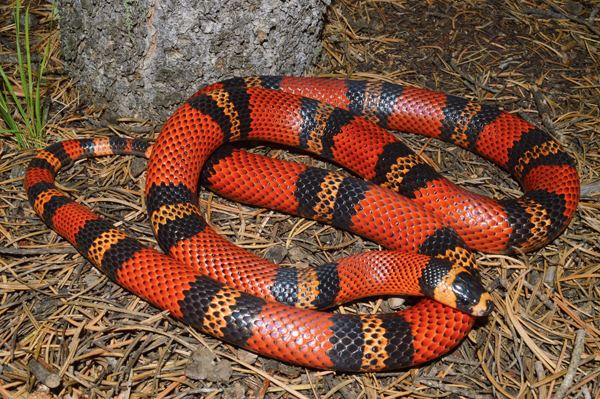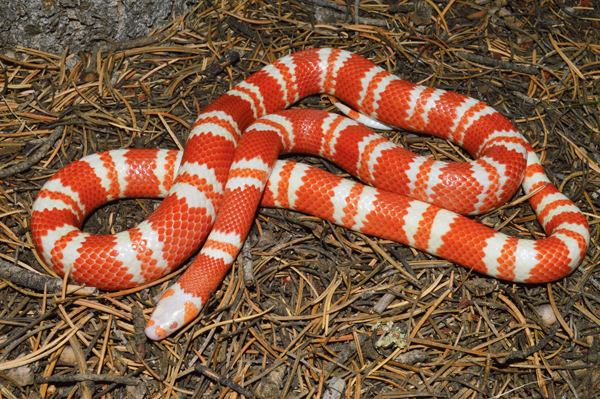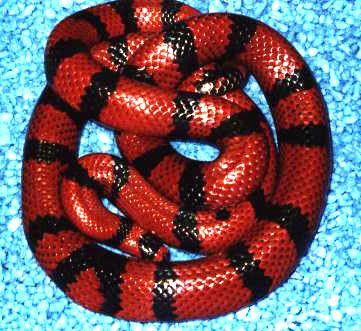Suborder Serpentes Subfamily Colubrinae Phylum Chordata Rank Subspecies | Subphylum Vertebrata Genus Lampropeltis Order Scaled reptiles | |
 | ||
Scientific name Lampropeltis triangulum hondurensis Similar Milk snake, Snake, Kingsnakes, Reptile, Pueblan milk snake | ||
Lampropeltis triangulum hondurensis tangerine albino honduran milk snake
Lampropeltis triangulum hondurensis, commonly known as the Honduran milk snake, is an egg laying species of nonvenomous colubrid snake. It is one of the more commonly bred milk snakes in captivity and is one of the larger milk snakes, reaching a length of 5 feet.
Contents
- Lampropeltis triangulum hondurensis tangerine albino honduran milk snake
- Anerythristic honduran milk snake
- Taxonomy
- Description
- Habitat
- Diet
- Reproduction
- In captivity
- References
Anerythristic honduran milk snake
Taxonomy

The generic name (Lampropeltis) is derived from the Ancient Greek lamprós (λαμπρος) meaning "bright" and peltas (πελτας) meaning "shield", after the sheen of their scales. Its specific name (triangulum) is Latin for "triangle" and refers to the three colors found on the scales of the species (red, black, and yellow). Its subspecific name hondurensis is a Latinization of their primary country of origin: Honduras.
Description
The Honduran milk snake's base color is red with distinct rings or bands of black and yellow. In some cases the yellow is actually a deep orange color and the animal in question is referred to as a tangerine phase. The Honduran milk snake is one of the larger subspecies of milk snake, attaining a length of 48 inches in the wild and some captive specimens reaching a length of 5 feet. The Honduran milk snake has a resemblance to the coral snake and this similarity in color, known as Batesian mimicry, helps protect the snake from potential predators.
Habitat

The Honduran milk snake inhabits low to medium elevations of the tropical areas of Honduras, Nicaragua, and Northeastern Costa Rica.
Diet
The Honduran milk snake uses constriction to kill its prey and tends to be opportunistic when it comes to its diet; they eat other snakes (ophiophagy), including venomous snakes, lizards, rodents, birds and eggs..
Reproduction
Honduran milk snakes become sexually mature at 18 months. The females are oviparous, laying an average of 3-18 eggs per clutch in early June. The eggs incubate for approximately two months, and hatch in August or September. The hatchlings are 8 inches long and darker in color than their parents when they emerge from the eggs.
In captivity
Honduran milk snakes adapt well to captivity due to their relative ease of care and docile nature, and their large size and brilliant colors make them impressive and attractive pets. Like all king snakes and milk snakes, they must be housed alone, apart from the breeding season, because they are cannibalistic.
